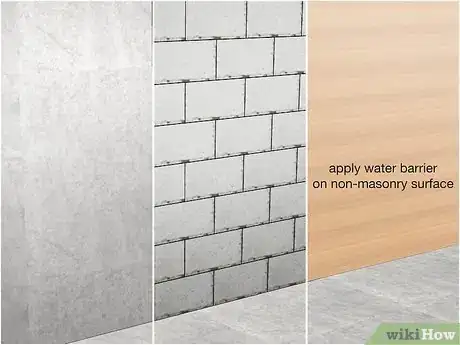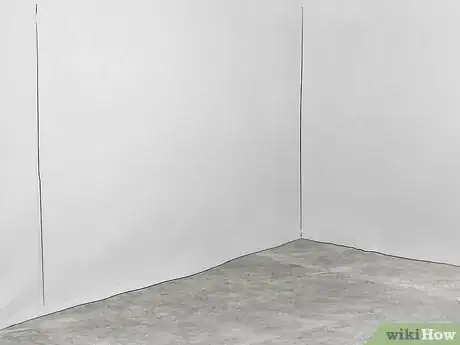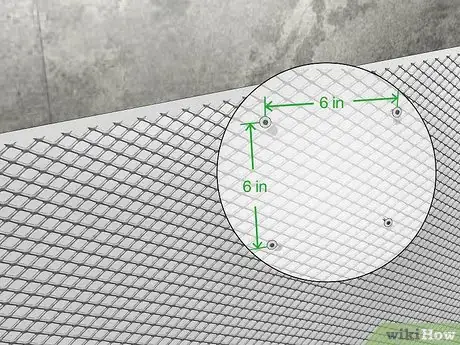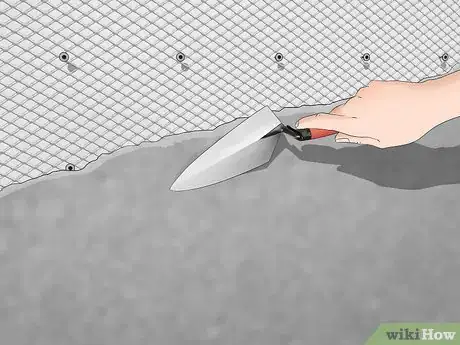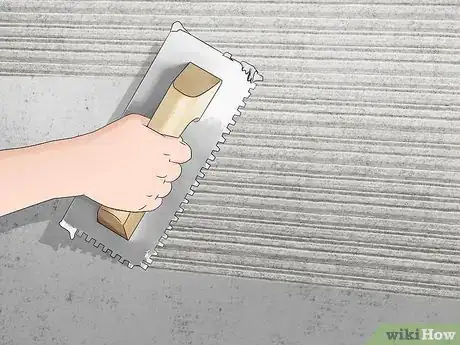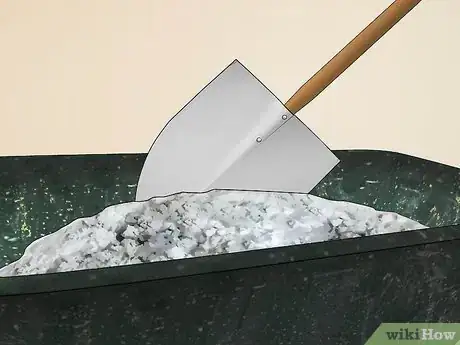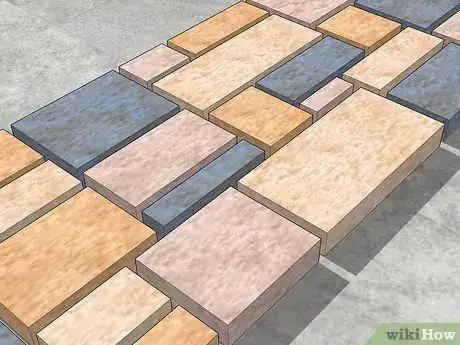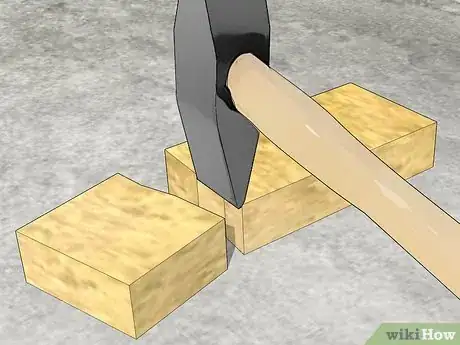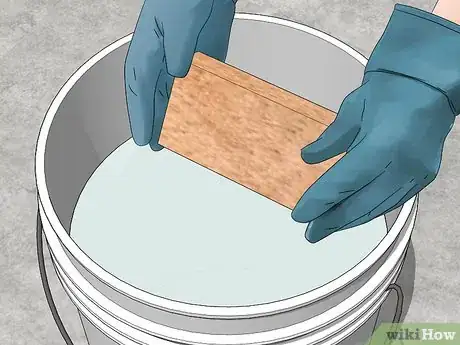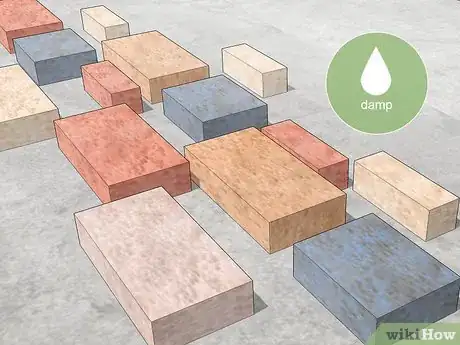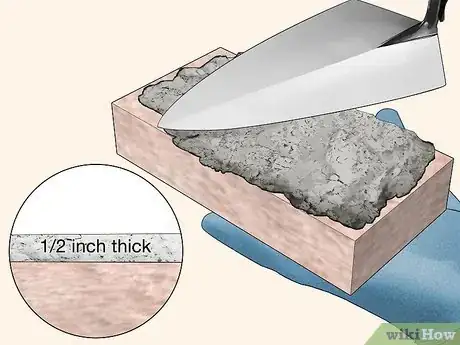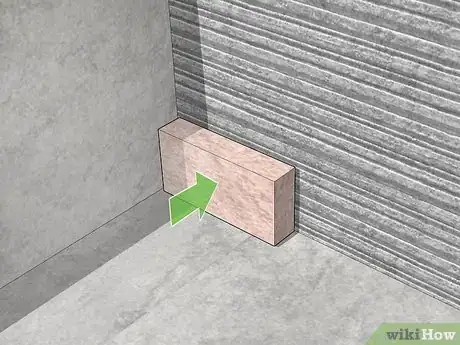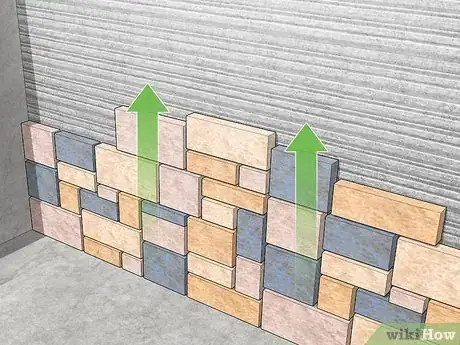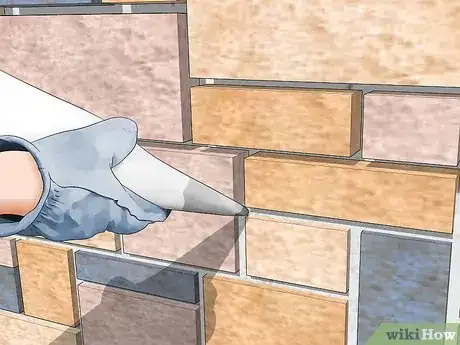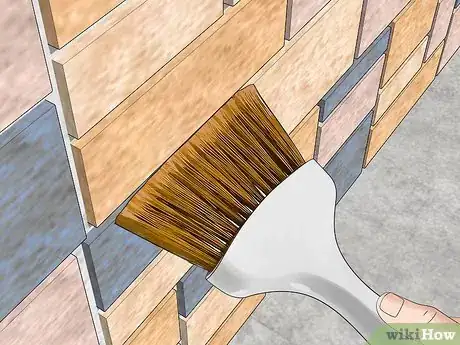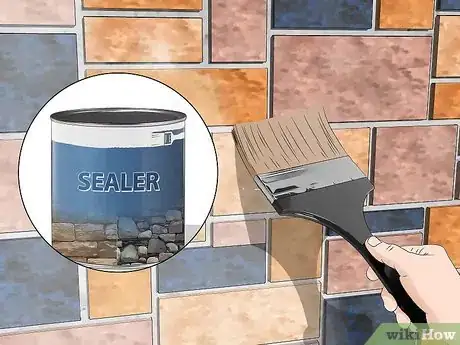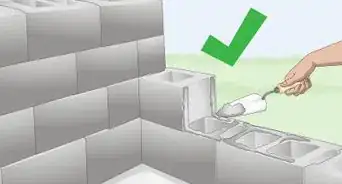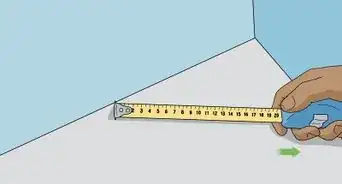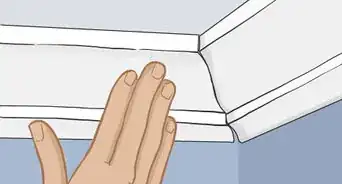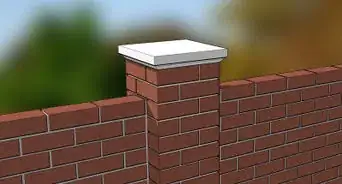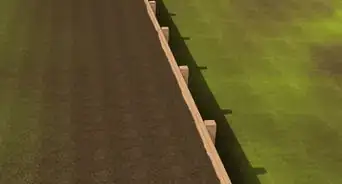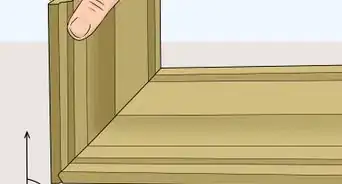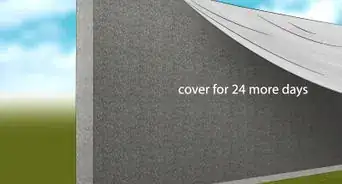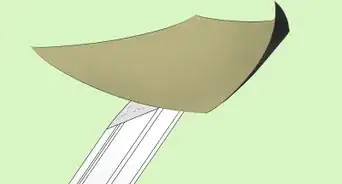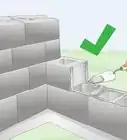wikiHow is a “wiki,” similar to Wikipedia, which means that many of our articles are co-written by multiple authors. To create this article, volunteer authors worked to edit and improve it over time.
wikiHow marks an article as reader-approved once it receives enough positive feedback. In this case, 83% of readers who voted found the article helpful, earning it our reader-approved status.
This article has been viewed 152,945 times.
Learn more...
Installing stone veneer is a great way to enhance the interior and/or exterior of your home or any structure. This versatile and low maintenance update can be achieved with a few simple tools and little bit of know-how by almost anyone. Virtually all stone veneer is made of the same materials and the installation is all the same. Here are some steps to guide you as you learn how to install stone veneer.
Steps
Prepping and Layering the Scratch Coat
-
1Prepare the surface. Stone veneer can be applied to any masonry surface such as concrete, existing brick, or foundation cinder block. If you're working with wood or any other non-masonry surface, you can create an appropriate surface by surrounding the non-masonry surface with a water barrier.[1]
-
2Apply a moisture vapor barrier if you're doing an exterior application. Moisture vapor barriers usually come with a self-sealing membrane. Peel back the outer layer to expose the sticky backside of the membrane and simply stick it onto your surface.[2]
- Be careful about only applying the membrane where you want it. The membrane's unpeeled surface is extremely sticky; if it accidentally sticks somewhere it shouldn't, you're going to have a hell of a time trying to get it off.
- If you're working inside, you shouldn't need to set down a water vapor barrier, unless you're adding stone veneer to a wood surface, like plywood.
Advertisement -
3Create a barrier of 18-gauge metal lath after you've placed your water vapor barrier. Use 1 1/2 to 2 inch (3.81 cm to 5.08 cm) nails, and space them out at 6 inch (15.24 cm) intervals.
-
4Create a scratch coat with mortar. You can make mortar by mixing 2 or 3 parts washed sand with 1 part cement and adding water, according to the manufacturer's instructions. With a trowel, cover the entire surface of the lath with this mixture, about 1/2 to 3/4 inches (1.27 cm to 1.905 cm) thick. The lath should not stick out from the scratch coat.[3]
- Directions for mixing mortar will vary. Follow manufacturer's directions, but most of all, be consistent with whatever recipe you choose. If you decide to use 2:1 sand to cement, stick with 2:1 each time you use mortar elsewhere.
-
5Before the scratch coat dries, scrape horizontal grooves into the scratch coat. Use a metal scraper or a scrap piece of the lath material. Allow the scratch coat to set up, or cure, according to the manufacturer's instructions. Now, you are ready to apply your stone veneer.
Installing the Stone
-
1Mix the mortar, following the same ratio you used for the scratch coat. Mix for a minimum of 5 minutes, until you've achieved the consistency of mashed potatoes. Too wet and your mortar will lose strength. Too dry and your mortar will seize up too quickly.[4]
-
2Determine the layout of the stones. It's helpful to do a dry run and think about the layout of the stones as they will appear on the wall. Spending a little extra time configuring their placement now will save you the headache of excessive trimming later.
- If it's helpful, do the dry run on the ground instead of trying to hold the stones up against the wall. The basic arrangement of the stones should transfer.
-
3Use a chipping hammer, trowel edge, or other blunt tool, to trim the stones to shape. The stones themselves should be fairly easy to shape. You will be able to hide the trimmed edges later, using grout, so don't worry if the edges aren't perfectly rounded.[5]
-
4Wash the stones until they are completely free of any dirt, sand or other loose particles. The grout adheres much better to completely clean surfaces.
-
5Dry the stones to assure that the surfaces of the stones are damp. If necessary, use a masonry brush to lightly moisten the stone, but do not saturate it. This will prevent the stones from drawing moisture away from the mortar, which will allow it to set up with a naturally stronger bond.
-
6Backbutter the mortar onto the stone pieces one by one. Try to keep the backbuttered mortar about 1/2 inch (1.27 cm) thick. If you happen to get any mortar on the face of the stone, wipe it away with a damp towel before it dries.[6]
-
7Start installing the stones, beginning in the bottom corners. Turn any trimmed edges either directly up or down, away from the focal point. Press the stones into the mortar, twisting them slightly to squeeze out some of the excess and strengthen the bond. Use a trowel, joint tool, or brush to remove any excess mortar that has been forced beyond the finished joint, or onto the surface of the stone itself.
- Keep the joints consistent to achieve the most appealing result. You probably want your joints to be between 1 and 3 inches (2.5 and 7.5 cm) long.
-
8Continue backbuttering and laying stone until the entire wall is finished. Take period breaks; step back and prospect your work every so often. If you are installing veneer across more than one face of a wall, consider getting cornerstone pieces. Most stone veneer manufacturers make them, and they add an easy naturalness to the project.
Finishing the Process
-
1When finished placing all the stones, fill the joints with a grout bag. Best results come from using a grout bag. During this step, conceal any trimmed edges. Use a striking tool to get the joints to the desired depth as the mortar stiffens.
-
2Clean away any excess particles with plain water and a whisk broom. Be sure to remove any stray mortar from the face of the stone within 30 minutes — mortar will be impossible to remove after 24 hours.
- Use a paint brush to clean up the mortared joints before the mortar sets completely.[7] Do this especially if working inside, as inside stone wants a more polished look.
-
3Apply a sealer, following the manufacturer's instructions. Sealed stone will be easier to clean and maintain, and some sealers will repel stains. Reapply the sealer periodically to maximize the advantages. be advised some sealers will change the color of the stone or create a "wet" glossy look.
Community Q&A
-
QuestionIs the procedure the same when using blasted rock to face a fireplace?
 Community AnswerI would just get a bag of quick mix cement and "throw" it or toss it at the back drop and smooth it out or get some flat stone cut and stick them to the concrete that stuck to the backdrop. Screwing a metal sheet to the backdrop helps keep the concrete stuck to the wall. If it won't stick, just use chicken wire or something, it doesn't matter really as long as you covered it up well with concrete and you can stick rocks into it and things too if you want. Highlight it with a nice mantel piece or a mirror and plants.
Community AnswerI would just get a bag of quick mix cement and "throw" it or toss it at the back drop and smooth it out or get some flat stone cut and stick them to the concrete that stuck to the backdrop. Screwing a metal sheet to the backdrop helps keep the concrete stuck to the wall. If it won't stick, just use chicken wire or something, it doesn't matter really as long as you covered it up well with concrete and you can stick rocks into it and things too if you want. Highlight it with a nice mantel piece or a mirror and plants.
Warnings
- For exterior: make sure to install correct flashing to avoid excessive water penetration⧼thumbs_response⧽
- For exterior: Install all stone veneer over 40 degrees and in dry conditions.⧼thumbs_response⧽
References
- ↑ https://www.rcpblock.com/installation-stone-veneer.html
- ↑ https://www.culturedstone.com/blog/stone-veneer-installation
- ↑ https://www.finehomebuilding.com/2016/11/23/cultured-stone-scratch-coat
- ↑ http://realstoneveneersoftn.com/wp-content/uploads/2017/03/Installation.pdf
- ↑ http://realstoneveneersoftn.com/wp-content/uploads/2017/03/Installation.pdf
- ↑ https://www.stoneworld.com/articles/90387-installing-stone-veneer
- ↑ http://castnaturalstone.com/how-to-install-stone-veneer.php
About This Article
To install a stone veneer, start by covering the entire area with 18-gauge metal lath and using 2 inch nails to secure it to the surface. Next, cover the lath with a 3/4 inch thick layer of mortar and scrape horizontal grooves into it so the stones will grip better. Once the mortar is dry, clean the stones you are using and leave them slightly damp, so they’ll form a stronger bond with the mortar. Then, stack the stones by pushing them into the mortar, making sure to start from the bottom corners. Finally, use a grout bag to fill in the gaps between the stones. For tips on how to seal a stone veneer so it’s easier to maintain, read on!
